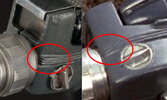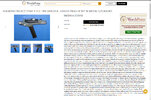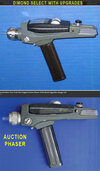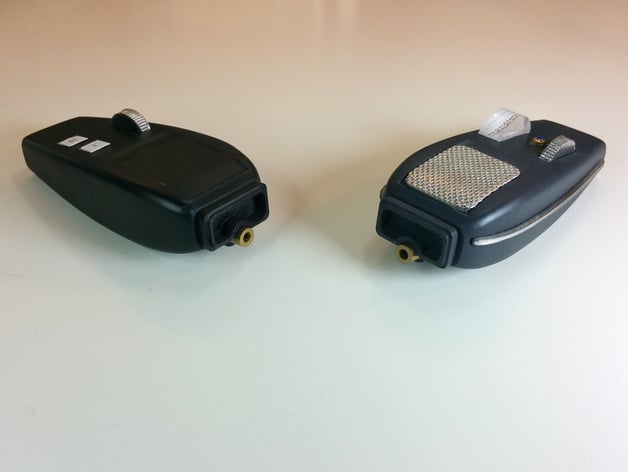Okay, so the materials would all have to match the Jein to potentially fool experts--fiberglass body shells, brass handle with wooden craft sticks, etc. That rules out literally taking a Wand Company or Art Asylum phaser and reworking it, since those have molded plastic bodies. And, as you noted, there are certain tells that TWC phaser has, despite being laser-scanned from the Jein. They cleaned the scan up to idealize it, and presumably added those anti-counterfeit tells, as licensees often do with replicas.
The Art Asylum phasers are based on the HMS/convention/Trials & Tribble-ations phasers, which have certain inaccurate tells of their own (P2 sight window, the curved side ribs on the AA version, etc.). The HMS kits sold through Roddenberry.com were resin, and a bit more accurate than the AA modification of that design.
If I were building a forgery, It would probably be easier to 3D-model and print a master (or do it the old-fashioned way, with wood or plaster) to mold and cast fiberglass shells from, rather than trying to pull molds directly from a TWC or AA phaser. As noted, extensive photos and measuremenys of the Jein hero are out there to use as a reference.
I also wonder if a little digging online for 3D phaser models might turn up one which matches the specific shapes of the auction prop. As in, someone dug around Thingiverse or wherever, printed a model, then pulled molds from it.
Again, I'm not outright saying the prop is a forgery, but extraordinary claims require extraordinary proof, and so every alternate theory other than "it's real because the experts say so" needs to be exhausted, because we're not getting anything else to work with, here.





